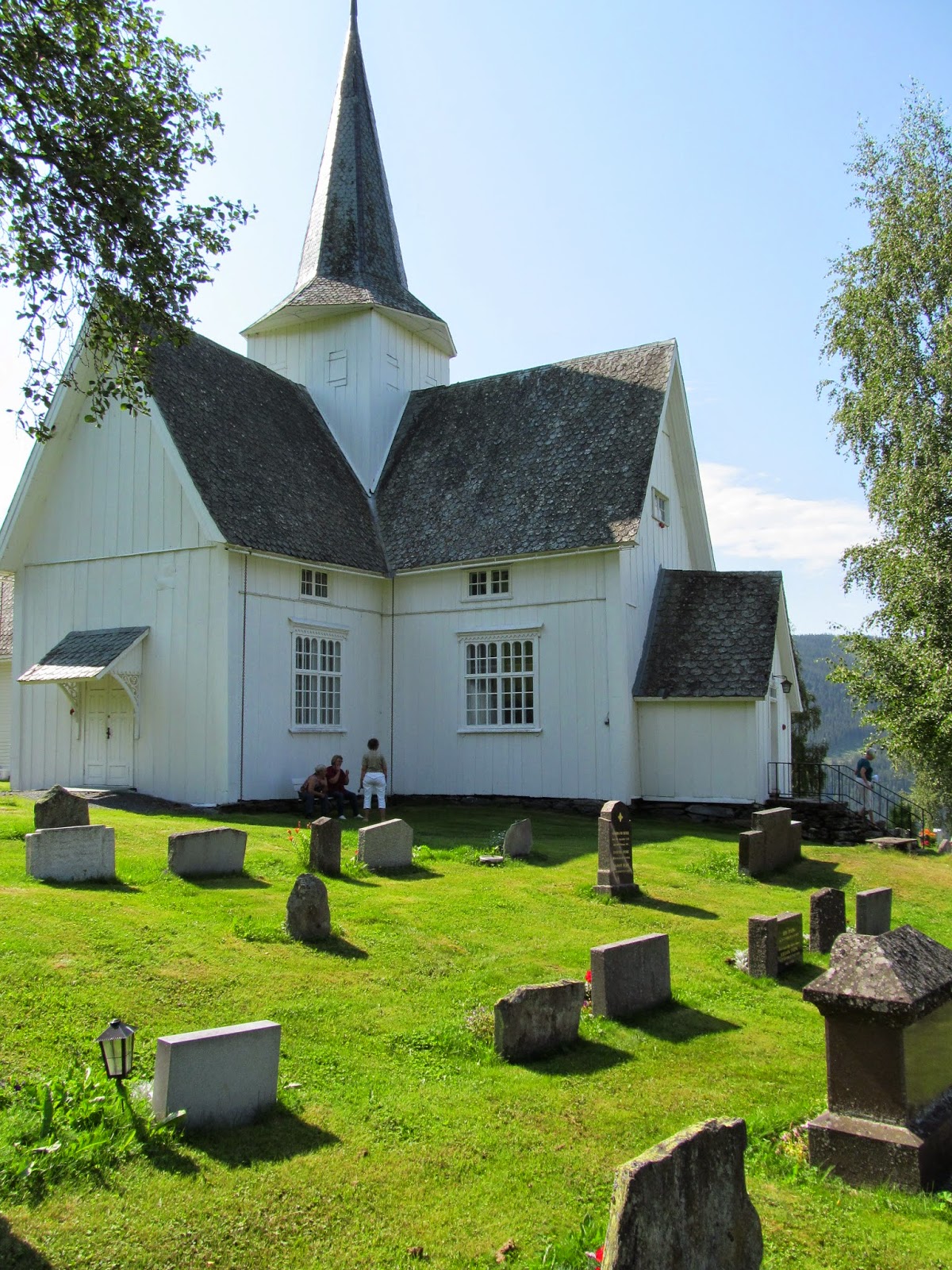Some grave yards had little grave-tending stations set up with a water spigot, watering cans, a trowel and trimming shears. Sometimes I would encounter whole families cheerfully sprucing up the family graves. One day, late in the afternoon, I saw a woman who evidently had come straight from work. She was dressed for the office, had her handbag with her—and her gardening gloves. She must have thought when she left work, “Oh I have a few extra minutes. On my way home, I'll just stop by and trim around Granny's grave—the grass will be getting a little high.” She was the only one there that day, and it was so peaceful among the gravestones of various design, a gentle breeze tossing the branches of the bushes that gracefully dotted the churchyard. I could see how people would be drawn to spend a little time at the end of the day in the presence of their by-gone companions—and of ancestors they may never have met but had always known through the family tradition of visiting and tending their resting places.
The first time I
encountered folks tending graves was the day that I went with three
other members of our Valdres ancestor-hunting group—in a car.
(After days of being herded on and off buses to visit sites of
ancestral interest, it was such a relief to be in a little car with
only three people.) One of them, Linda, wanted to go to look at the
church in the town her family had called home. Wyonne, the driver,
was a Minnesotan who had lived in Oslo for twenty-five years and
therefore spoke Norwegian. We arrived at the church to find it locked
so Wyonne, who is not a shy person, approached a little knot of
people in the churchyard. They were variously watering, weeding and
cutting grass. It was a mother, father, a couple kids, and the
grandmother. They communicated to Wyonne that the caretaker was away,
but maybe his son could be reached. They helped Wyonne call him on
their cellphone and she managed to talk him into coming to unlock the
church for us. She hung up and announced that he'd be arriving on
his motor scooter in ten or fifteen minutes.
In the meantime we hung
out and watched the family leisurely enjoying themselves in the
beautiful churchyard on that beautiful day. They would take breaks
now and then. Sit down on the ground or, in the grandmother's case,
on a nearby bench. Chat. Have a snack. Wander around through other
sections of the grave yard. It wasn't like they were hurrying to
finish a chore so that they could get it over with and move on to a
more exciting activity. This was the activity. Occasionally
we would all smile and nod and gesture at each other in the awkward,
well-meaning way people do when they can't communicate with words.
Eventually Anfind roared
up on his motor scooter, grinning and nodding. And then we got our
own personal tour of the church, with Wyonne relaying our questions
to him. Then Linda, Floyd, and I would wait forever for her to do the translation of
his answers. We had to be patient, partly because she would become so
involved in the conversation with the very entertaining Anfind that
she would forget we were waiting. And partly because she couldn't get
him to stop talking—he was having such a good time telling her
stories and jokes. So the two of them were having a knee-slapping
time while we stood by, watching and laughing. Periodically we were
let in on the fun.
We found out that Anfind
and his father (who was in his 80's) dug the graves by hand. When he
wasn't digging graves, we wondered what else Anfind did.
Anfind: Well, I get the church ready for weddings.
Us: How do you do that?
Anfind: Well, I get the church ready for weddings.
Us: How do you do that?
Anfind: Oh, I set
up the chairs at the altar.
Us: Show us how!
Us: Show us how!
So he demonstrated and described how the whole wedding was conducted. In the beginning of
the ceremony, the chairs are set so that the bride and groom face
each other across the aisle in front of the altar. After they make
their vows, the groom's chair is moved so that he and his new wife
are seated next to each other, symbolizing their new union. When we
learned about that part, we made Anfind move the chairs side by side
so that Linda and her new husband could sit next to each other. And
then I took a picture of the seventy-something newlyweds. Next,
Wyonne asked Anfind if, since Floyd was a pastor, she could take a
picture of him standing up in the pulpit. Of course the affable
Anfind agreed and smiled and laughed along with the rest of us as
Floyd gestured from the pulpit. We all had such a good time. We hated
to say good-bye. But we had other churches and churchyards to
visit—and it was Anfind's day off. So we smiled and nodded and
waved him off on his motor scooter. We said our good-byes (ha det
bra), and our thanks (takk) to the grave-tending family
and then piled into the car to continue on our way.


